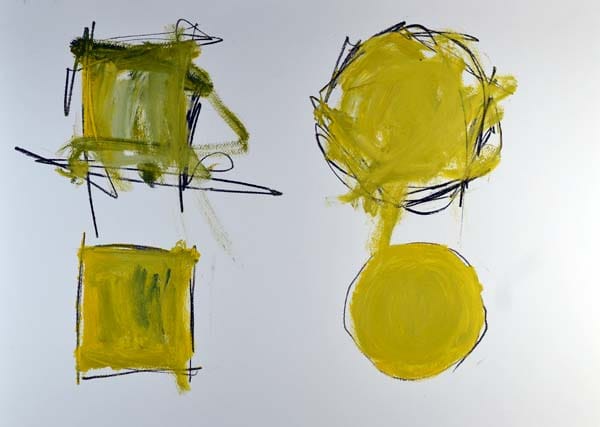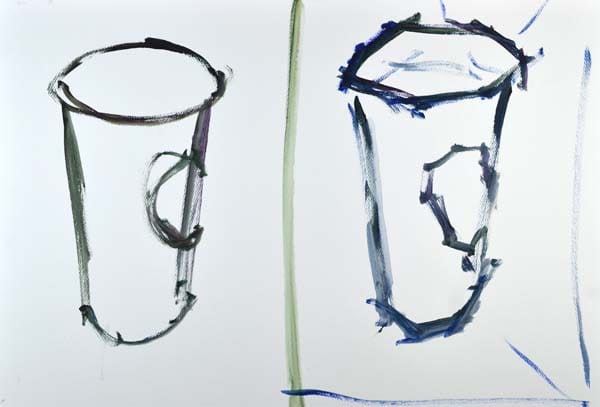Two Simple Loose & Expressive Painting Concepts
These two simple loose & expressive painting concepts — loosening up shapes and experimenting with edges — will help you paint with more freedom and confidence.

In the garage studio, I like to remind myself that painting doesn’t always have to be about polished, finished pieces. Sometimes the best way to grow is by keeping things simple. This lesson shares two loose and expressive painting concepts that will help you let go of perfection and build confidence in your brushwork.
👉 Four Ways To Start An Expressive Painting - fresh ideas to begin your paintings
Concept 1: Loosen Up the Shapes
Start with something basic — a square, circle, or triangle. In one version, paint it tight and precise like you’re drafting it with a ruler. In the other, paint it loose, expressive, and imperfect.
The loose version may feel messy, but that’s where you’ll find freedom. It forces you to push outside the lines, let go of control, and discover rhythm in your brushwork.
👉 Discover more mixed media painting techniques in my Mixed Media Hub

Concept 2: Experiment with Edges
Edges make or break a painting. In this exercise, use a simple object (like a coffee cup) and practice curved vs. angled edges.
- Curved approach: smooth, rounded lines for the rim, sides, and handle.
- Angular approach: break those curves into short, straight lines, letting the angles bounce off each other and the edges of your paper.
Both read differently — smooth curves feel softer, but angles can give your subject more character and energy.

Why These Concepts Matter
Painting loosely isn’t about being careless. It’s about learning how far you can push things before they fall apart — and realizing that expressive mistakes often carry more life than a “perfect” shape.
Keep these two drills in your toolbox:
- Loosen up your shapes.
- Play with your edges.
Together, they’ll keep your work fresh, dynamic, and full of character.
Garage Studio Tip
If you catch yourself tightening up too much, flip the script. Use a bigger brush, change your medium, or purposely exaggerate a shape. The point is to stay playful — because that’s when your most expressive work happens.
Learn & Improve Your Acrylic Skills
- Acrylic Hub– Your go-to guide for tutorials, tips, and resources.
- Subscribe for More Great Content - Get tutorials, tips, and updates straight to your inbox.
- Follow Me on Pinterest - Daily inspiration, tips, and fresh ideas.
Recommended Acrylic Painting Materials
-
Princeton Catalyst Brushes – Flats (#6, #12), Rounds (#4, #8), Fan (#4), Liner Brush
Durable synthetic bristles for versatile acrylic techniques -
Liquitex Heavy Body Acrylic Paint – Essential Colors
Cadmium Yellow, Yellow Ochre, Alizarin Crimson, Cadmium Red Light, Ultramarine Blue, Cobalt Blue, Burnt Sienna, Titanium White -
Winsor & Newton Cotton Canvas
Reliable stretched canvas for studio and plein air work -
Strathmore 400 Series Mixed Media Paper
Heavyweight, acid-free paper for acrylic and mixed media -
Fabriano Artistico 140lb Cold Press Paper
Excellent for acrylic, mixed media, and textured effects -
Blick Multi-Colored Painting Knife Set
Variety of shapes for texture, scraping, and bold strokes - Miscellaneous: Two pint-sized water containers, paper towels (from Home Depot or Walmart)
- Note: I use canvas or sturdy cardboard as my palette — no store-bought palettes needed.




